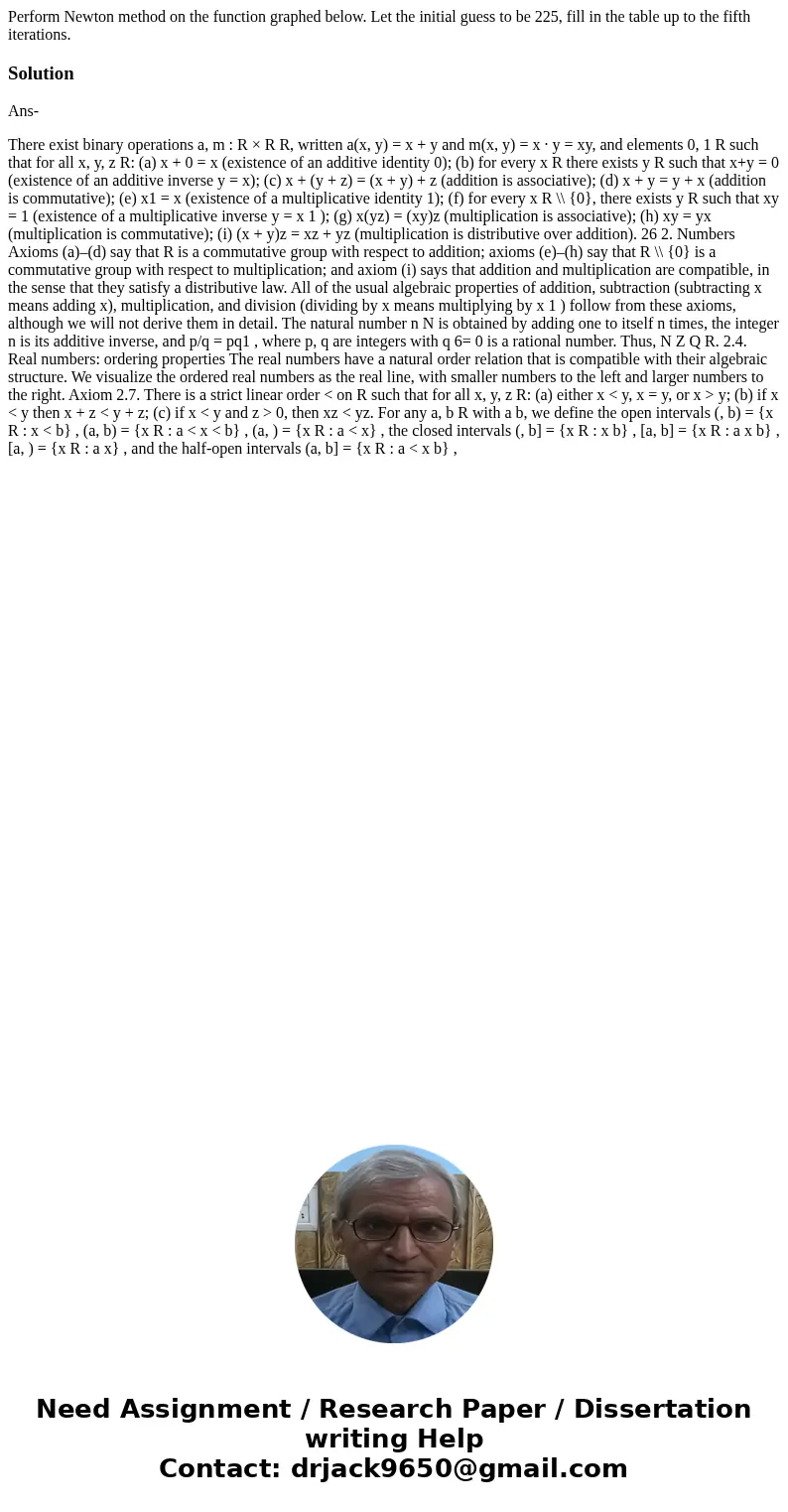Perform Newton method on the function graphed below Let the
Solution
Ans-
There exist binary operations a, m : R × R R, written a(x, y) = x + y and m(x, y) = x · y = xy, and elements 0, 1 R such that for all x, y, z R: (a) x + 0 = x (existence of an additive identity 0); (b) for every x R there exists y R such that x+y = 0 (existence of an additive inverse y = x); (c) x + (y + z) = (x + y) + z (addition is associative); (d) x + y = y + x (addition is commutative); (e) x1 = x (existence of a multiplicative identity 1); (f) for every x R \\ {0}, there exists y R such that xy = 1 (existence of a multiplicative inverse y = x 1 ); (g) x(yz) = (xy)z (multiplication is associative); (h) xy = yx (multiplication is commutative); (i) (x + y)z = xz + yz (multiplication is distributive over addition). 26 2. Numbers Axioms (a)–(d) say that R is a commutative group with respect to addition; axioms (e)–(h) say that R \\ {0} is a commutative group with respect to multiplication; and axiom (i) says that addition and multiplication are compatible, in the sense that they satisfy a distributive law. All of the usual algebraic properties of addition, subtraction (subtracting x means adding x), multiplication, and division (dividing by x means multiplying by x 1 ) follow from these axioms, although we will not derive them in detail. The natural number n N is obtained by adding one to itself n times, the integer n is its additive inverse, and p/q = pq1 , where p, q are integers with q 6= 0 is a rational number. Thus, N Z Q R. 2.4. Real numbers: ordering properties The real numbers have a natural order relation that is compatible with their algebraic structure. We visualize the ordered real numbers as the real line, with smaller numbers to the left and larger numbers to the right. Axiom 2.7. There is a strict linear order < on R such that for all x, y, z R: (a) either x < y, x = y, or x > y; (b) if x < y then x + z < y + z; (c) if x < y and z > 0, then xz < yz. For any a, b R with a b, we define the open intervals (, b) = {x R : x < b} , (a, b) = {x R : a < x < b} , (a, ) = {x R : a < x} , the closed intervals (, b] = {x R : x b} , [a, b] = {x R : a x b} , [a, ) = {x R : a x} , and the half-open intervals (a, b] = {x R : a < x b} ,

 Homework Sourse
Homework Sourse